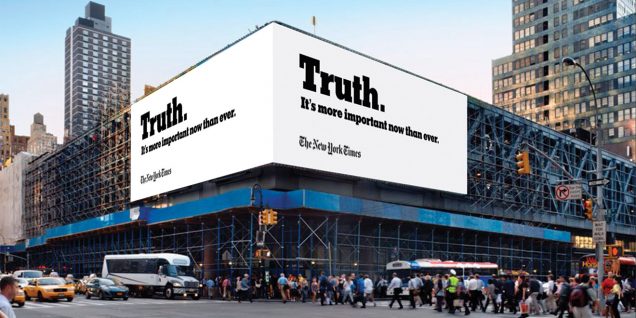As social media has become an important role in our daily life, numbers of traditional industries have been affected and have been brought to a new stage. “Since the 2008 U.S. presidential campaign, social media sites like Facebook and Twitter have become critical battlegrounds for political parties, interest groups, and politically involved social media users.” (Brummette et al., 2018). In my opinion, the ability of social media to allow general public to post and comment without almost any cost makes the online environment become the Garden of Eden to all types of ideas. While being monitored and restricted by laws and regulations in our offline lives, in very rare cases would we pay a price for behaving uncivilly online, which leads to the online environment nowadays.
In the article Read All About It: The Politicization of “Fake News” on Twitterby Brummette et al., the researchers raised an argument that “social media play in restricting its members to similar ideologies and therefore establishing clusters of users who think and communicate similarly”, which strongly interfere the diversity of opinions and the smooth communication on social media (2018). Similar opinion was brought up by Groshek & Koc-Michalska in 2017 in their article Helping populism win? Social media use, filter bubbles, and support for populist presidential candidates in the 2016 US election campaign, that people are more influenced by propaganda online, while the influence of traditional media are becoming minimal in recent years. In political elections, the trend these years have become to skew to those who are popularized on social media, and with the echo-chamber effects, a certain group tends to gather based on their shared opinions, therefore forms up a polarized online environment.

Alongside the current plitical environment, the production of gossip, rumors, and “fake news” becomes messier and more massive, as well as the labeling phenomenon. Producers of “fake news” use this phenomenon to “discredit some news organizations’ critical reporting” (Brummette et al., 2018) and financial purposes. From what I see it, the phenomenon of “fake news”, whether it is a “real” fake news, or is a fake news made up to discredit a certain group or a person, it has become an indispensable part of the social media environment, and serves as either a marketing tactic, or a discredit on someone/some groups.
Not only this phenomenon occurs in political environment, but in show business, agencies start to realize the power of “fake” campaigns. Earlier this year, a famous Chinese singer called Kris Wu started a social media battle towards a Sports commentary and news online platform Hupu, saying that the users on Hupuare discrediting and insulting him. The battle then started between the users of Hupuand fans of Kris Wu (which are clearly two different target groups). This incident burns all over the online environment of Weibo for days, giving an unimaginably high exposure for the singer with millions of repost and comments, and being the trendy topic on Weibo for a long time. After this incident was over, some started to reflect that this incident might be brought up not by Hupu(since the singer claimed that it was Hupu who started this war), but by the agencies behind the singer and Huputogether as a fake campaign to raise exposure for Kris Wu. As the current online environment goes, higher exposure means higher profit and control, and sadly it may become the ultimate goal of most organizations and influencers.
I’m not sure if this is a good thing.
Reference
Groshek, J., & Koc-Michalska, K. (2017). Helping populism win? Social media use, filter bubbles, and support for populist presidential candidates in the 2016 US election campaign. Information, Communication & Society,20(9), 1389-1407. doi:10.1080/1369118x.2017.1329334
Brummette, J., Distaso, M., Vafeiadis, M., & Messner, M. (2018). Read All About It: The Politicization of “Fake News” on Twitter. Journalism & Mass Communication Quarterly,95(2), 497-517. doi:10.1177/1077699018769906